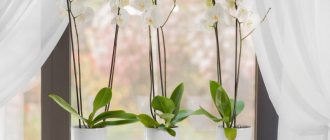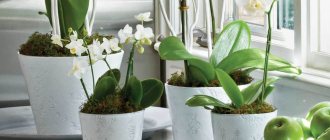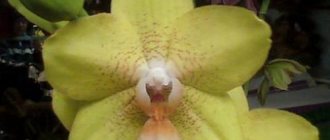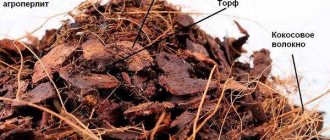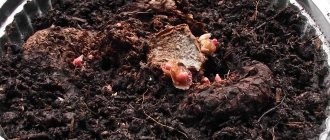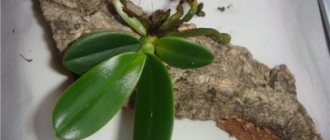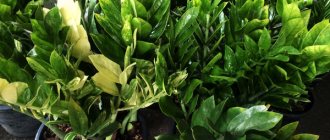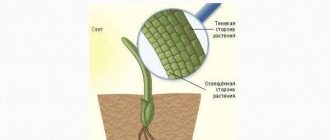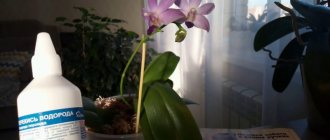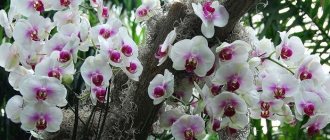Plants » Flowers
0
1381
Article rating
Kira Stoletova
soil substrate for plants, especially indoor crops, is a source of nutrients and moisture. Moss for orchids is used to protect the root system, to better moisten the soil and insulate the stem. The plant is useful for combating diseases that threaten the orchid.
Moss for orchids
Varieties
Several types of moss are used for planting orchids. In total, there are 3 varieties that are most suitable for this matter. It is recommended to switch to using moss after training on tree bark.
Sphagnum
Orchid moss is very common in nature. Grows in forests and wetlands. It is easy to assemble and handle. If necessary, you can purchase a ready-made version at a specialized flower shop.
Reindeer moss
Resin moss is an alternative to sphagnum moss. It is also called reindeer moss. You can also assemble and prepare it yourself or purchase it ready-made in a store. Although it crumbles, many gardeners use reindeer moss as a drainage layer within other moss.
Kukushkin flax
Kukushkin flax is a soil component that grows in the forest. Quite often it grows in the same place with sphagnum, which allows you to alternate them. Can be used as a main substrate or instead of an additive.
Advantages and disadvantages
So, proper use of moss can help with many problems. The advantages include:
- long-term moisture retention (even if your home is hot and dry);
- indispensable aid in the growth of young or weakened plants;
- disinfecting properties (orchids with sphagnum moss in a pot are less likely to get sick);
- aesthetic appearance: moss on the surface of the pot (especially if it is alive) looks very beautiful, and a block with a blooming orchid and lush green moss can, at first glance, transport you to the tropics.
But with inexperienced gardeners, a plant covered with moss often dies . There are the following disadvantages:
- It’s easy to “overdo it” with moss; by laying it in a dense thick layer, you are almost guaranteed to block access to the roots and destroy the plant;
- moss in a pot contributes to root rotting; proper watering with moss is more difficult to calculate;
- if the moss was not properly harvested, it will harbor pests that will quickly destroy your orchid;
- Because of moss, the soil can become salty and algae form on it.
ATTENTION : If you are just starting to grow orchids, it is best to take ordinary phalaenopsis and practice on them and pine or pine bark, without any moss. Only when you learn how to properly water on a “clean” substrate can you start experimenting with moss.
Whether a plant takes root in moss or not depends on many factors:
- watering frequency;
- humidity;
- temperature of a specific irrigation.
Procurement rules
If you plan to collect soil for plants yourself, then you should choose moss that forms a peat cushion. Carefully remove only the top layer, leaving the lower part untouched. It is in the upper part that all the nutritional components necessary for plant growth are located.
Collection or purchase
If you plan to use sphagnum, it is best to prepare it yourself, which will allow you to be confident in its quality. The same applies to cuckoo flax. But with reindeer moss everything is more complicated; you will have to look for it for a long time, since it does not grow everywhere. It is best to buy in a store.
Processing and disinfection
Collected moss for orchids from the forest needs to be pre-treated against insects. To do this, it is soaked for 12 hours, treated with Akarin, and then kept for another 14 days. Only after this can it be dried. The easiest way is to pour boiling water for 5 minutes, squeeze, and dry.
Drying
Typically, the components of the future soil are dried in the sun. Sphagnum moss is collected in small bunches and then hung on a rope. Alternatively, it is not recommended to use an oven or tumble dryer as complete drying cannot be achieved this way.
How to use sphagnum?
Let's talk about the rules for planting orchids in substrates with the addition of moss:
- As an additive, moss can be placed in a pot in cases where the top of the soil dries quickly and you see that the roots on the surface are drying out. If the flower grows in a basket, it is worth covering it with moss on all sides. Adhere to the following rules:
- moss should not be placed close to the neck of the orchid and compacted tightly - this leads to rotting;
- The thickness of the moss should not exceed 3-4 cm.
- Crushed moss is added to the inside of the substrate. In this case, it must first be treated with mineral fertilizer, for example, Kemira Lux. The sphagnum moss is then crushed and added to the mixture. For example, the following composition: chalked moss, ground fern leaves, pieces of bark, crushed charcoal. This mixture is poured under the roots, and not placed on top.
- You can make the mixture a little differently: moss and bark are placed in layers in a pot. The bottom layer is bark (find out more about what kind of bark can be used for orchids and how you can prepare it with your own hands here).
- Experienced gardeners grow the plant simply in moss. In this case, an orchid is installed in polka dots, the spaces between the roots are loosely filled with moss. Drainage is required at the bottom.
You can find out more about the optimal composition of soil for orchids and how to prepare it yourself here.
TIP : If the moss is too dry, it will be difficult to work with. Its scales fly into the eyes, nose and clothes. It can be moistened with a spray bottle. Or the night before use, put the required amount of moss in a plastic bag, pour a small amount of water into it and tie the bag. By morning the moss will gain the required elasticity.
Watch a video about using sphagnum moss for an orchid:
Features of use
If you plan to use reindeer moss or sphagnum, let's figure out how to use it correctly. Such material can be added to the main soil in certain proportions or used as an independent substrate. The proportions, for example, can be 2:1:5, where the ingredients are moss, charcoal, pine chips.
Use in soil composition
The crushed material is added to the soil during planting, replanting, or when propagating the plant. Experienced gardeners recommend pre-treating with mineral fertilizers.
As a mulching material
Crushed sphagnum is added to the soil composition as one of the components. Pre-treated with mineral fertilizers and crushed. In the future, it is allowed to pour it under the root system.
For plant reanimation
A common problem for novice gardeners is the rotting root system of orchids. Moss is used for resuscitation. To do this, a plant is planted in a container with sphagnum and greenhouse conditions are created.
For raising children
For these purposes, moss is placed in a container and moistened well. After this, the peduncle is cut off and treated with cytokinin paste. After some time, the first shoots will begin to appear from the dormant buds.
Why do orchids need moss?
An orchid of tropical origin is an epiphytic plant with a special root system. It does not need soil, since it is able to attach itself to other plants or trees without using their juices and nutrients. Growing widely, the roots absorb moisture from the air, and under the influence of light the process of photosynthesis takes place in them.
Consequently, the substrate for orchids is needed mainly so that the flower can be fixed and held in a certain place, and not for feeding the plant. Based on this, experienced gardeners believe that moss is one of the best substrates or its components for orchids .
In addition, moss performs other functions:
- Absorbs and retains moisture well. Due to its structure, moss absorbs 20 times more water than its own weight. Thus, it helps the orchid cope with excessive watering.
- Wet moss is always green, but as it dries it becomes lighter, so you can visually determine the moisture level of the substrate and water it in a timely manner.
- After the moss dies, it turns into peat, which serves as food for the orchid.
- It does not rot, as it contains antiseptic substances, thanks to which the entire substrate in the pot is disinfected.
- The antibacterial and antiseptic properties of moss protect the flower from various diseases that arise as a result of waterlogging of the substrate.
- The plant makes the soil looser and lighter.
- Has an attractive appearance.
Reviews from flower growers
Tatyana, 42 years old, Moscow
I have been growing orchids for several years now. I use moss as the main component, sometimes adding it to the soil. I recently started using it as mulch. The first time was unusual. Now I understand how convenient it is.
Catherine. 30 years old, Ufa
For a long time I grew orchids on pine bark. A friend recommended sphagnum. If used correctly, there will be no problems.
What to do if you appear in the pot on your own?
Sometimes a green coating appears in an orchid pot (usually from May to August) . This plaque is nothing more than self-growing moss or algae. By themselves, they do not pose a danger to the flower. But the appearance of green moss or algae in the pot indicates that the pot is too damp: dampness and warmth are needed for their development.
In addition to overwatering, this can happen when the pot is too large or the substrate has become compacted. In this situation, the orchid needs to be replanted:
- rinse and dry the roots;
- take a new substrate;
- Rinse the pot with alcohol and dry.
Watering after transplantation is reduced.
Chilean and New Zealand moss in Japanese orchid planting techniques
Having Chilean or New Zealand sphagnum at your disposal, you can practice alternative techniques for growing orchids - “bonsai” or “on a hummock”:
- "Bonsai". A large granite stone is taken and wrapped in moss stems. An orchid is placed on the top of the stone, the roots are distributed along the side surfaces. The plant is secured with wire, and the root system is additionally wrapped in moss.
- "On a hummock." The plastic basket is turned upside down and wrapped with long-stemmed moss. An orchid is planted on top, secured and wrapped with another layer of moss. Everything is carefully removed from the basket and placed in a low pot so that a mound is formed with an orchid on top.
Orchids planted using these methods can only be watered by spraying. New Zealand and Chilean sphagnums collect and hold water well, so no soaking or watering is required.
Miniature varieties of orchids - mini-phalaenopsis or neophynetia - are suitable for growing according to the Japanese method.
Peat
Peat is a natural sedimentary rock formed from decomposed mosses in wetlands. Based on their qualitative composition and degree of transformation, the following types are distinguished:
- Horse
It is obtained from sphagnum mosses, wild rosemary, cotton grass and other similar plants that are undemanding in terms of nutrition and water. Decomposes slowly, forming large, hard fibers.
- Lowland
Most often, the starting materials for its decomposition are marsh sedge, reed grass, horsetails, and woody plants.
Important! When growing orchids, lowland peat is not used. Its fine dusty structure is not suitable for loose substrates. By settling on the surface of large parts of pine bark, coconut fiber, etc., it leads to compaction of the mixture and impedes aeration.
- Transition
Occupies an intermediate stage between high-moor and low-lying peat. May contain plant residues.
For indoor floriculture, the top and transitional types are used. They are also included in the substrate for orchids.
Using an additive for orchids
The dry natural additive is used as drainage. It increases the looseness of the soil, so it is easier for water to escape through the holes in the pot. The natural additive is suitable for creating bedding for flowerpots or orchids. The plant soil mixture is covered before winter. With such shelter, the orchid survives the winter without suffering from temperature changes. Moss is used to wrap the orchid's rhizome before replanting: this procedure increases the level of moisture in the new soil—there is no need to additionally fertilize the transplanted flower.
Inorganic substrate components
Sand
| Sand |
| Perlite |
| Vermiculite |
Only coarse quartz sand and white river sand, found on river shallows, with a grain size of approximately 1-2 mm, can be used as a substrate component. Any sand, especially yellow quarry sand, must be thoroughly washed with water until the clay particles completely disappear, and then boiled. Sand perfectly loosens the substrate. It is chemically inert and stable. Sand is practically not populated by blue-green algae and does not accumulate microflora. One of the disadvantages of sand is its heavy weight - because of this, sooner or later the sand settles in the lower part of the pot and can cake.
Expanded clay
A building material well known to any gardener. Available in the form of balls of various sizes. Good for drainage, as it is highly hygroscopic. Used as a ripper.
Perlite and vermiculite
Also building materials, currently widely available for sale in flower shops. They have good moisture holding capacity and are chemically inert. Used to lighten the substrate as a ripper.
Styrofoam
Synthetic packaging material. Lightweight, chemically inert. In granules it can be used as a loosening agent, large fractions are used as drainage. Styrofoam sheets are useful as blocks for young plants.
Foam rubber
Synthetic packaging material. It is highly hygroscopic and is used as a cultivator in a mixture with moss. Increases the moisture capacity of the substrate.
I’ll give you an example of a simple mixture that I use myself with success. Pine bark in various fractions + moss + foliage + charcoal (5: 2: 0.5: 0.5), this mixture is suitable for growing most epiphytes in a room.
You will find more detailed recommendations for specific types in the Catalog section.
